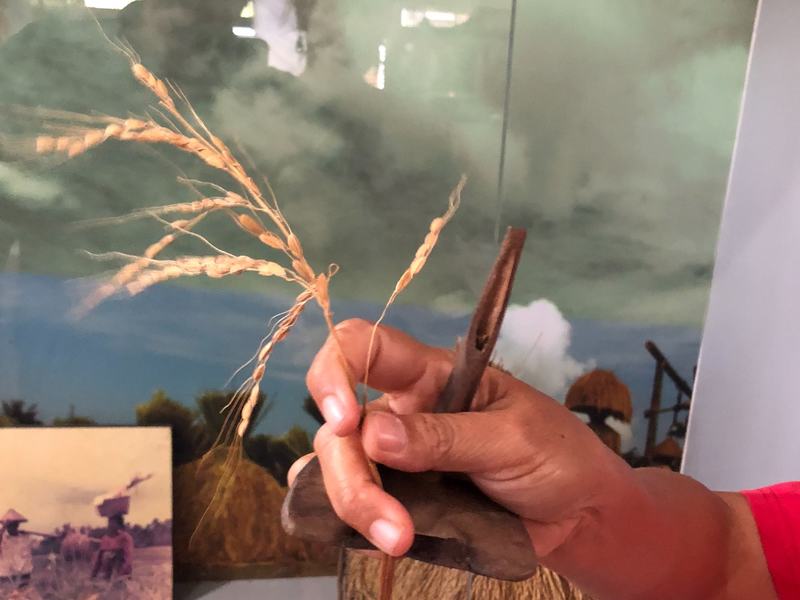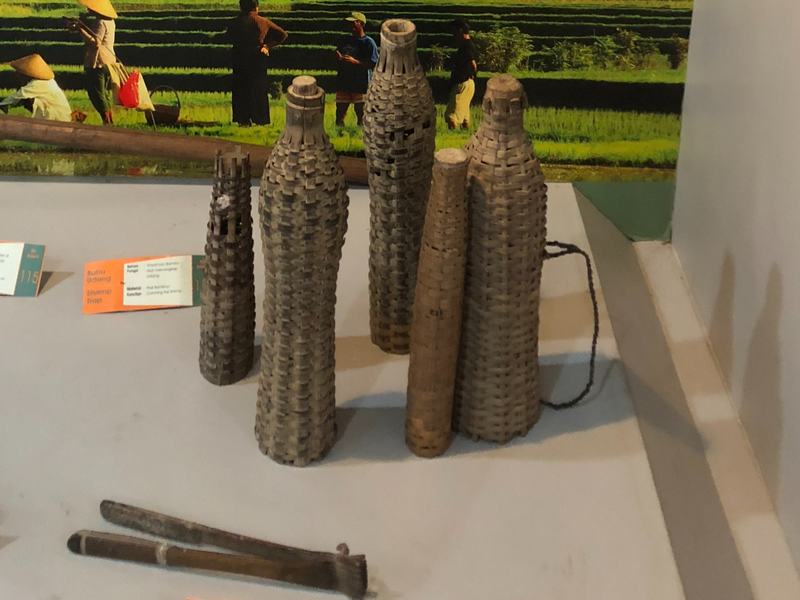
The jewel-like perfection and beauty of Bali’s rice terraces illustrate that it is not just about a crop, giving food and prosperity to the farmers. For over a thousand years, this cascading landscape has been shaped by men in accordance with nature and the gods. The connecting link is the water irrigation with a sophisticated network of tunnels, dams and weirs. This Balinese traditional water management is called Subak, an ancient self-governing farmers´ association which unites the rice-growing society in order to distribute the water in a just and efficient way.
Since 2012 the Balinese Subak system is on the list of the UNESCO World Heritage Sites and an area of 19,500 hectares has been designated as “Cultural Landscape”, it showcases the unique collaboration of people and nature. The three sites are: Pakerisan Valley, Jatiluwih Rice Terraces and the Taman Ayun Temple.
The “Eastern Route” connects five places of interest: the Archaeology Museum of Pejeng, Tirtha Empul with its spring feeding one of the most ancient irrigation canals, Gunung Kawi a collection of 12th century royal tombs, the Batur Volcano Museum on the scenic crater lake and the Supreme Subak Temple “Pura Ulun Danu Batur”, the origin of every spring and river in Bali. The “Western Route” is best started at the Museum Subak, located in Tabanan, going on to the sites of Catur Angga Batukaru and the Royal Temple of Taman Ayun in Mengwi.
The basis of Bali’s 1,300 water collectives is Tri Hita Kirana – the three causes of goodness – an ancient Balinese philosophical principal. This cosmological doctrine emphasizes the harmonious relationship between the individual and the realms of spirits, the human world and nature. In this context, the Subaks are not only practical managers of waters; they take on an important spiritual and religious task. All this is rooted in the believe that the irrigation water is a gift from the goddess of the lakes Dewi Danu. Every little offering like the artfully crafted “banten”, which can be found in every possible corner all over Bali, serves the soothing of the gods. Every sumptuous and colourful gathering in the Subak temples and shrines is carried out in a grateful spirit of honouring the gods.

Depending on the successful irrigation of the fields, the different Subaks are inseparably bonded into a single system. This unique system has been handed down the generations for over a thousand years. In a royal edict from 896 AD, tunnel builders for irrigation are mentioned as professional artisans. The term “Subak” first appeared in the Pandak Bandung inscription from 1071 AD. These Subaks are not oriented to the village boundaries. They are cooperatives of farmers who own rice terraces watered by the same source. Together they form the congregation of a particular Subak Temple.
In 1981, the Subak Museum opened in Tabanan, 21 km north of Denpasar. It displays and explains everything connected to the ancient system and its vivid role accordingly to regulate the water distribution, the pest control or nowadays the attempt to bring back the organically grown native Balinese rice on a larger scale. In the 70s the introduction of Green Revolution Rice has lead to higher yields – three instead of two harvest – but it leaches the soil and correction need to be done soon.
All these decisions are made by 50 to 400 members form the general assembly of a Subak. Together they also elect the head – the Klian Subak. In order for the Subak to function steadily and allow water access to all rice fields, rules are set and followed strictly.

The irrigation systems starts at a spring or a dam from where the water is channeled and distributed. Besides each dam or spring there is a shrine where offerings are made to the Goddess of the Crater Lake or to the dam spirit. From there the irrigation can easily continue one kilometer or so downstream where the major water temple is situated, often called the “Head of the Rice Terraces” – Pura Ulun Sri. By giving the offerings the farmers endorse their dependency on the water streaming into their terraces, which vice versa depends upon the water flow at the dam and finally upon the water flow in the river.
Upstream and downstream temples have very different purposes: The upstream water, especially from the Crater Lake, is associated with the life-giving effects of water, regarded as a gift from the Goddess of the Lake. Downstream is the cleansing water, for example used to purify or to wash away pollution. It is just left to run into the river and will continue to the sea, where the impurities – also ashes from dead bodies – will be resolved.
The Subak system once made the Balinese rice farmer the most successful in the whole archipelago. A millennium later it is still the guarantee of sustainability for future rice farming generations.







